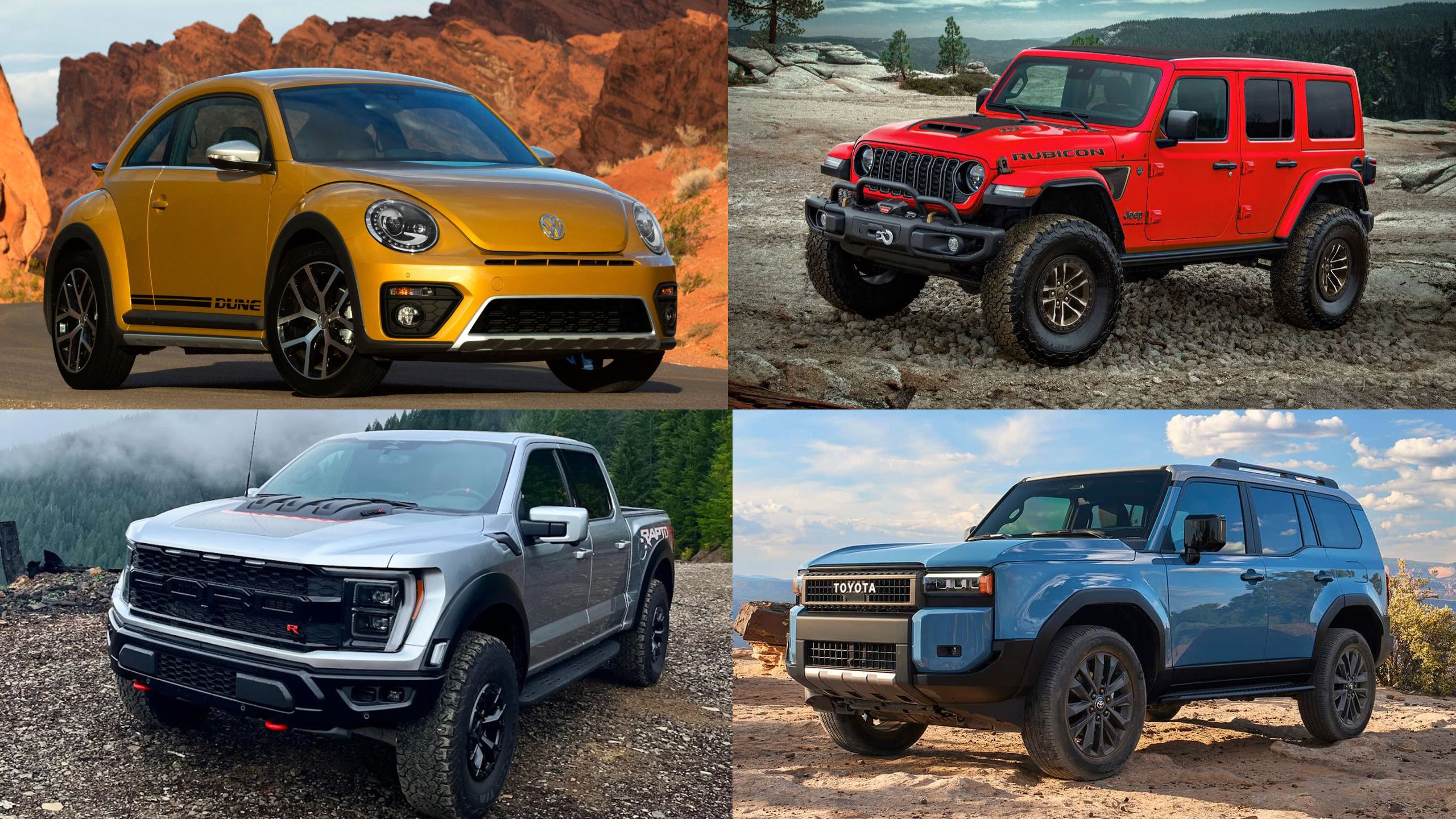The off-road vehicles spans a fascinating spectrum from purpose-built machines engineered to conquer Earth’s most challenging world to vehicles that, despite marketing claims, are best kept on smooth pavement.
As outdoor adventure becomes increasingly popular, understanding this distinction becomes crucial for both safety and enjoyment.
True off-road champions combine specialized suspensions, advanced 4×4 systems, protective underbody plating, and optimized ground clearance to tackle anything from desert dunes to rocky mountain trails.
They’re built to take punishment, with durability engineered into every component. Conversely, some vehicles project an adventurous image but lack the fundamental capabilities for serious off-pavement excursions.
This divide isn’t just about specifications it represents different design philosophies, intended uses, and the real-world performance when civilization’s comforts fall away.
5 Vehicles That Survive Any Terrain
Whether you’re a seasoned off-roader or considering your first adventure vehicle, understanding these extremes helps match expectations with reality when the pavement ends and the real adventure begins.
1. Toyota Land Cruiser
The Toyota Land Cruiser stands as perhaps the most globally respected off-road vehicle, earning its legendary status through decades of proven reliability in the harshest environments.
Originally designed for military use, the Land Cruiser has evolved while maintaining its core DNA of uncompromising durability and capability.
What distinguishes the Land Cruiser is not flashy marketing but its engineering philosophy of “reliability over everything,” building components that exceed normal durability requirements by significant margins.
At its heart, the Land Cruiser employs a robust body-on-frame construction that allows it to absorb extreme punishment without structural failure.
Its four-wheel-drive system isn’t just for occasional use but built for constant operation in challenging conditions, featuring low-range gearing that provides the controlled torque delivery essential for technical terrain.
Modern versions incorporate advanced technology like Crawl Control and Multi-Terrain Select systems that optimize traction across diverse surfaces from mud to rocks to sand.
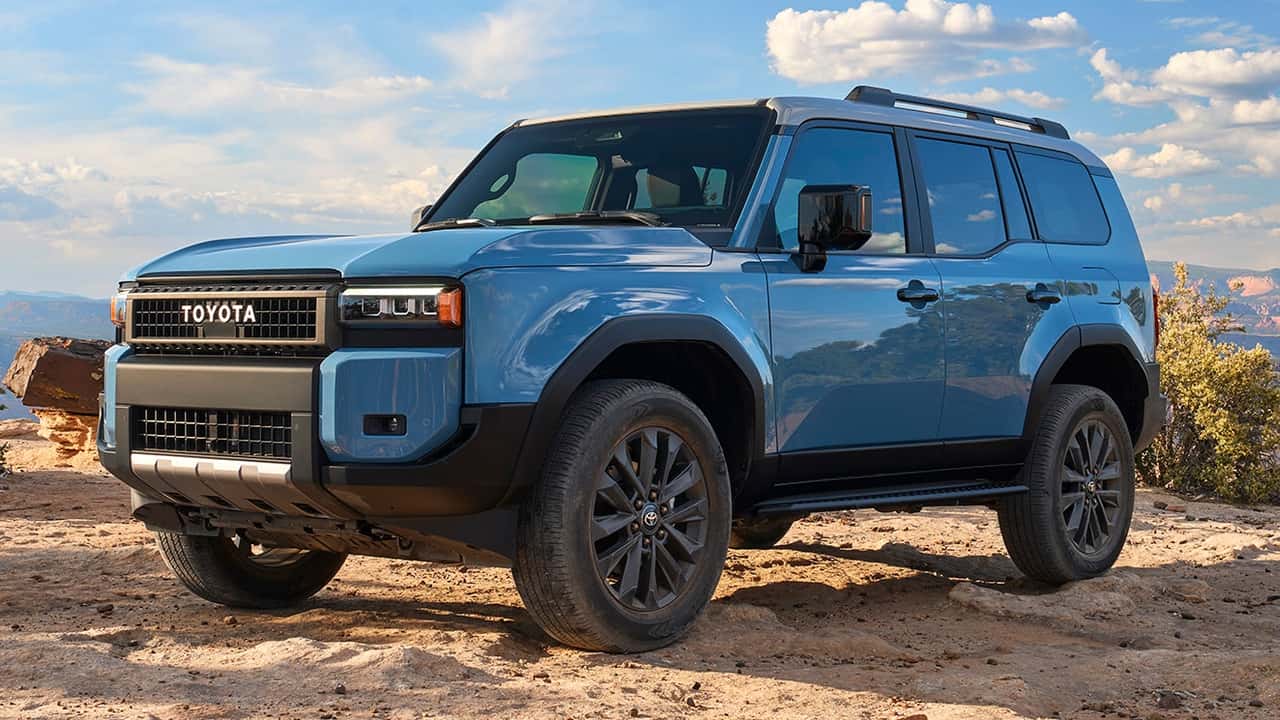
The Land Cruiser’s approach is visible in seemingly small details that make enormous differences in the field: oversized cooling systems prevent overheating during low-speed climbs, high-mounted air intakes reduce the risk of water damage during river crossings, and globally available parts mean repairs are possible even in remote locations.
With ample ground clearance, favorable approach and departure angles, and suspension articulation that keeps wheels planted on uneven terrain, the Land Cruiser tackles obstacles that would stop lesser vehicles.
Perhaps most importantly, Land Cruisers are designed with a practical understanding of real-world use. They balance raw capability with the comfort needed for long expeditions, and their reliability means owners can venture far from civilization with confidence.
From Australian Outback expeditions to humanitarian missions in Africa, the Land Cruiser’s reputation isn’t built on marketing, it’s earned through countless successful journeys where failure isn’t an option.
2. Jeep Wrangler Rubicon
The Jeep Wrangler Rubicon represents the purest expression of Jeep’s “Trail Rated” philosophy, a vehicle designed from the ground up to excel where roads don’t exist.
As the spiritual descendant of the original military Jeep, the Wrangler Rubicon maintains a singular focus on off-road capability that few production vehicles can match.
What makes the Rubicon special isn’t just its heritage but its purpose-built approach to conquering obstacles that would defeat virtually any other factory vehicle.
The Rubicon’s capability begins with its fundamentals: solid axles front and rear provide durability and articulation that independent suspension designs struggle to match.
These axles house electronic locking differentials that ensure power delivery to all wheels even when some lose contact with the ground.
The Rock-Trac 4:1 low-range transfer case delivers precisely controlled torque for technical climbs and descents, while the electronic sway bar disconnect system allows for increased wheel articulation when needed and better on-road handling when it’s not.
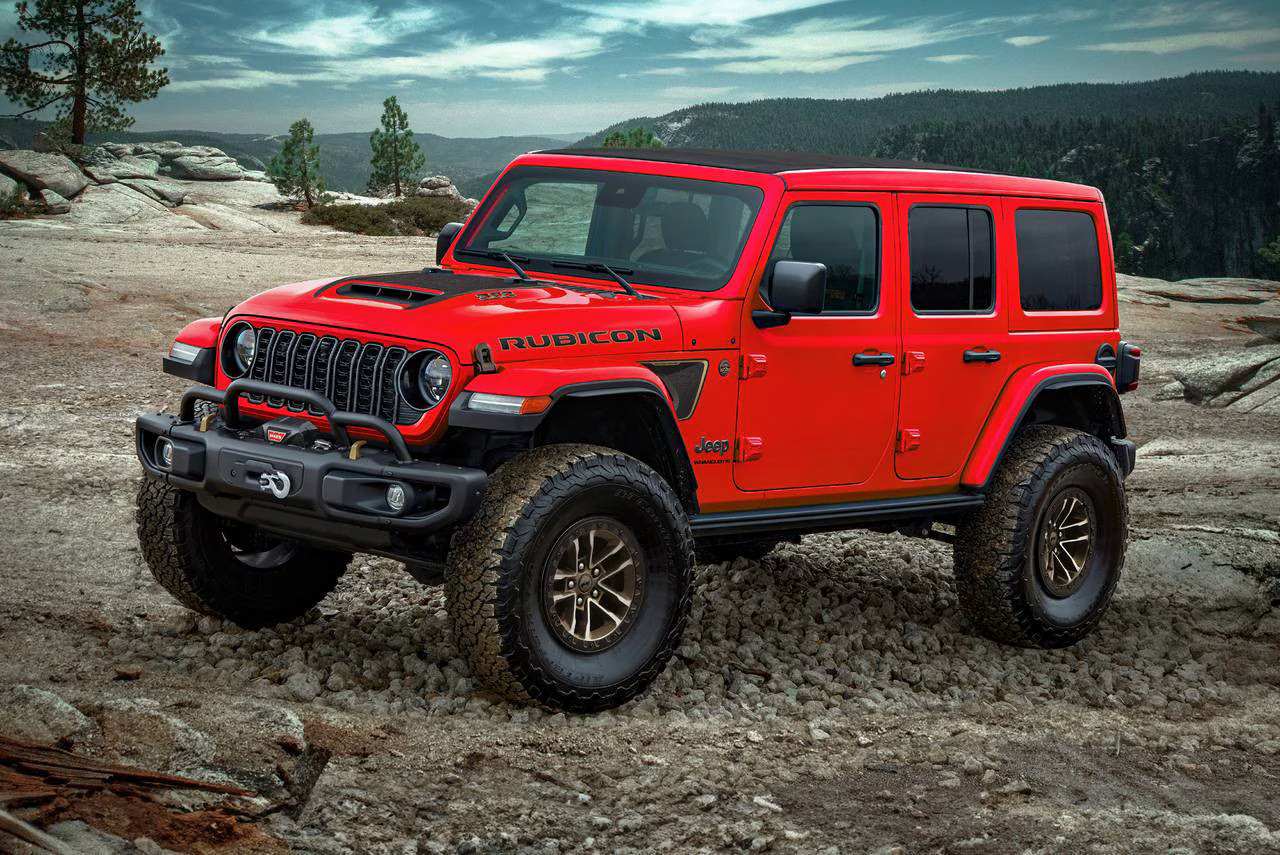
Unlike vehicles that claim off-road prowess through marketing, the Rubicon backs its capabilities with specialized hardware.
Heavy-duty Dana 44 axles, skid plates protecting vital components, and 33-inch all-terrain tires from the factory provide a foundation that many other vehicles would require extensive aftermarket modifications to achieve.
The high-clearance fender flares and steel rock rails aren’t styling elements, they’re functional protection for real-world trail use. Perhaps the Rubicon’s greatest strength is its modularity.
The removable roof and doors transform it from enclosed vehicle to open-air adventure platform, while the fold-down windshield provides unmatched visibility on technical trails.
This adaptability extends to its enormous aftermarket support, allowing owners to tailor their Rubicons to specific types of terrain from rock crawling to desert running.
The Wrangler Rubicon earns its place among the most capable off-road vehicles not through compromise but through specialization it sacrifices some on-road comfort and efficiency to deliver unmatched performance when the pavement ends.
Its design represents a clear understanding that true off-road capability comes not from clever marketing but from engineering specifically for the demands of challenging terrain.
3. Mercedes-Benz G-Class
The Mercedes-Benz G-Class defies conventional automotive evolution, maintaining its boxy military-derived silhouette for over four decades while hiding increasingly sophisticated off-road technology beneath its iconic design.
Originally developed as a military vehicle for the Shah of Iran, the G-Wagen has transformed from a utilitarian tool to a luxury status symbol without sacrificing its fundamental off-road DNA.
What makes the G-Class exceptional is this duality, combining legitimate expedition-grade capability with the comfort and technology expected of a premium luxury vehicle.
At its core, the G-Class retains the structural elements that define serious off-road machines: a robust ladder frame, solid rear axle, and three fully locking differentials a feature combination unmatched by virtually any other production vehicle.
These differentials can be engaged individually with the press of a button, allowing the driver to optimize traction for specific terrain conditions. The G-Class’s approach and departure angles rival purpose-built off-roaders, while its side-pipe exhaust system is cleverly designed to maximize water fording depth.

The G-Class’s suspension system balances the competing demands of off-road articulation and on-road comfort, allowing substantial wheel travel while maintaining stability.
Its advanced 4MATIC all-wheel-drive system distributes power efficiently across all four wheels, while the electronic aids like G-Mode automatically optimize throttle response, steering sensitivity, and stability control for off-road conditions.
Unlike vehicles that look rugged but lack substance, the G-Class backs its capabilities with substantial underbody protection and a chassis designed to absorb extreme forces.
What truly sets the G-Class apart is its execution of these capabilities without compromise to luxury. While other vehicles force customers to choose between capability and comfort, the G-Class delivers both.
Its hand-built quality means it can withstand years of abuse while maintaining its integrity, and its engineering allows it to perform in environmental extremes from Arctic cold to desert heat.
From the Australian Outback to the Sahara Desert, the G-Class has proven itself not just as a fashion statement but as a legitimate expedition vehicle for those who refuse to sacrifice either capability or comfort.
4. Ford F-150 Raptor
The Ford F-150 Raptor represents a revolutionary approach to off-road capability, bringing desert racing technology to a production vehicle that remains practical for everyday use.
Unlike traditional off-roaders that excel at low-speed technical terrain, the Raptor was engineered specifically for high-speed performance across rough world.
What makes the Raptor special isn’t just incremental improvements to a standard truck but a fundamentally different approach to off-road design philosophy focused on sustained high-speed travel over harsh terrain.
The Raptor’s capability begins with its purpose-built suspension system, featuring long-travel Fox Racing Shox with position-sensitive damping that provides progressive compression rates.
This sophisticated system allows the truck to absorb major impacts at speed without bottoming out, a capability that would require extensive custom modifications on conventional vehicles.
The suspension geometry provides significantly wider tracks than standard F-150s, improving stability during aggressive maneuvers, while specialized control arms increase wheel travel to levels previously unseen in production trucks.
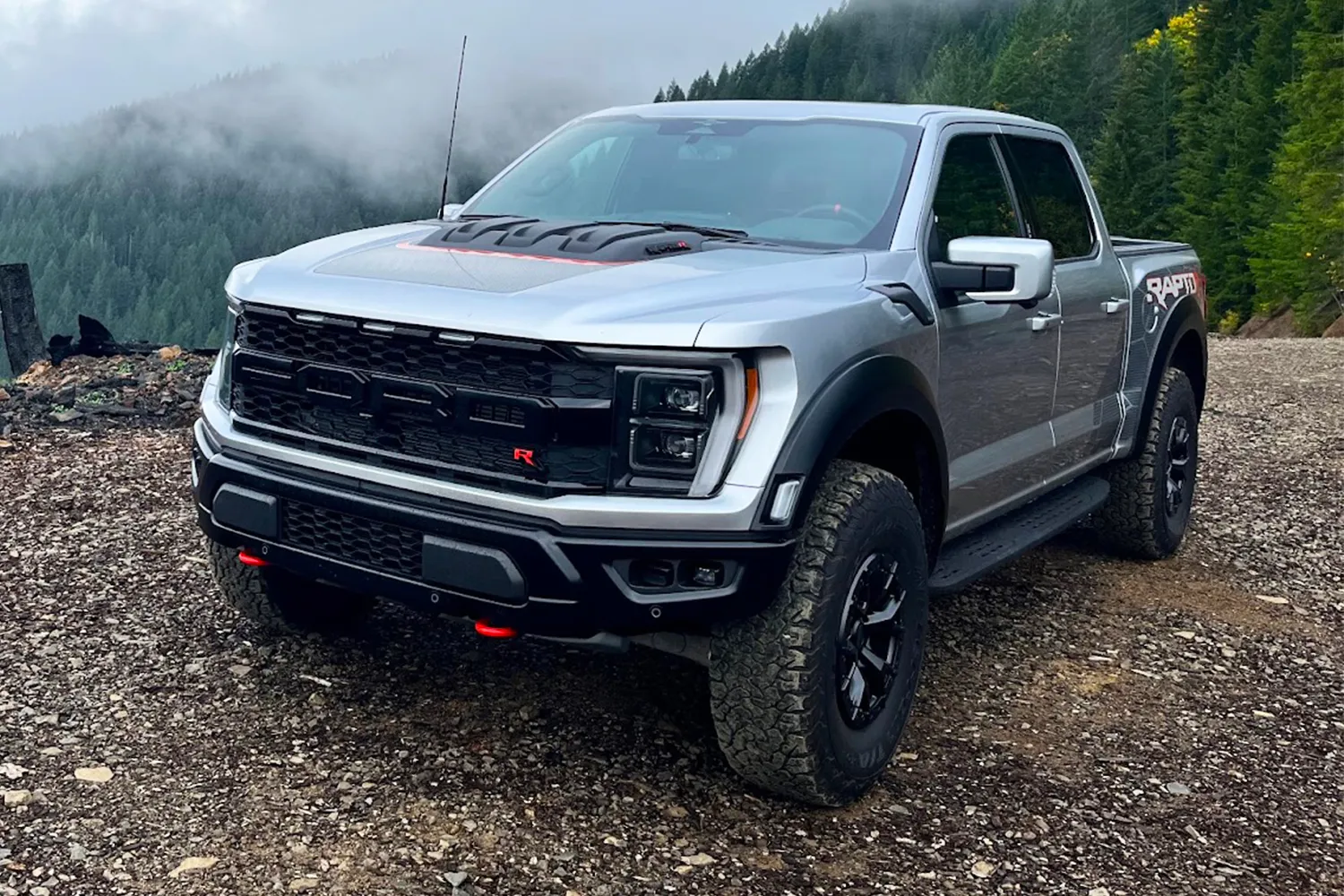
Power delivery in the Raptor is managed through a sophisticated drivetrain featuring multiple terrain modes that adjust throttle response, transmission shifting, and traction control for specific conditions.
The advanced transfer case combines the benefits of on-demand all-wheel drive with traditional four-wheel drive capabilities, allowing the Raptor to seamlessly transition between different traction requirements.
Unlike vehicles that merely look aggressive, the Raptor’s wider fenders, specialized bumpers, and increased ride height serve functional purposes for off-road performance.
Perhaps most impressively, the Raptor achieves this capability while maintaining reasonable on-road manners and full pickup truck functionality.
Its high-strength steel frame is reinforced in critical areas to withstand the forces generated during aggressive off-road driving, while skid plates protect vital components from damage.
The specialized BFGoodrich all-terrain tires were developed specifically for the Raptor’s unique performance requirements, balancing off-road traction with acceptable on-road behavior.
The Raptor earns its place among the most capable off-road vehicles by expanding the definition of what production vehicles can accomplish.
Rather than simply improving rock-crawling ability, Ford created a vehicle that can traverse vast distances of brutal terrain at speeds that would destroy conventional trucks, all while offering the comfort and utility expected of a modern pickup.
Also Read: 10 Longest-Running Vehicle Generations Still in Use
5. Land Rover Defender
The reimagined Land Rover Defender carries forward one of off-roading’s most storied legacies while completely reinventing the vehicle for modern expedition use.
Unlike its mechanically simple predecessor, the new Defender leverages sophisticated technology to deliver capability that matches its iconic heritage.
What distinguishes the Defender is its holistic approach to off-road design combining advanced electronics with thoughtful mechanical engineering to create a vehicle equally capable in remote wilderness and urban environments.
At the heart of the Defender’s capability is the Terrain Response 2 system, which analyzes driving conditions and automatically optimizes numerous vehicle parameters for specific surfaces.
This intelligent system works in concert with an advanced air suspension that can raise the vehicle for extreme clearance when needed or lower it for improved aerodynamics and access.
Unlike vehicles that rely solely on ground clearance, the Defender’s approach combines intelligent traction management with physical attributes to overcome obstacles.

The Defender’s monocoque construction represents a departure from the body-on-frame design of many off-roaders, but its aluminum-intensive architecture delivers exceptional strength-to-weight ratio while incorporating integral structural elements that would require bolt-on reinforcements in other vehicles.
This design philosophy extends to the Defender’s Wade Sensing technology, which combines physical attributes like a 35.4-inch wading depth with intelligent monitoring systems that protect vital components during water crossings.
What truly sets the modern Defender apart is its balanced approach to capability. Rather than specializing in one type of terrain, it’s engineered to handle everything from the Scottish Highlands to the Namibian desert.
This versatility extends to its interior, which combines ruggedized materials with thoughtful design elements like a practical dashboard with grab handles and storage.
The Defender’s 3D surround camera system provides visibility in tight off-road situations, while its Clearsight Ground View technology effectively makes the hood transparent for precise wheel placement.
The Defender earns its place among elite off-road vehicles by rejecting the false choice between capability and refinement. Its expedition credentials are validated not just by specifications but by a design philosophy that anticipates real-world challenges across diverse environments.
Unlike vehicles that merely look adventure-ready, the Defender is built for those who genuinely venture beyond roads, carrying forward a legacy of exploration while embracing modern technology.
5 Vehicles That Don’t Belong Off-Pavement
Let’s be real — just because a car has a bit of ground clearance, plastic cladding, or the word “Sport” slapped on the back doesn’t mean it’s cut out for the off-road life.
Some vehicles might look adventurous, but the moment you stray from smooth asphalt, they start begging for mercy. Whether it’s fragile drivetrains, weak suspension setups, or just plain bad design choices, these five vehicles are all show and no go when it comes to venturing off the beaten path.
If you’re thinking about tackling trails, mud, or even a gravel road, you might want to steer clear of these pavement princesses.
1. Nissan Murano CrossCabriolet
The Nissan Murano CrossCabriolet represents perhaps the most confused attempt at creating an “adventurous” vehicle in modern automotive history.
Launched as the “world’s first all-wheel drive crossover convertible,” this vehicle embodies the fundamental mismatch that occurs when marketing departments, rather than engineers, define a vehicle’s purpose.
Behind its adventure-lifestyle styling cues lies a vehicle fundamentally compromised for anything beyond smooth pavement and light dirt roads.
The CrossCabriolet’s primary off-road limitation begins with its basic architecture, removing the roof from a crossover SUV significantly compromises structural rigidity, requiring extensive reinforcement that adds weight without improving capability.
This additional weight sits high in the chassis, raising the center of gravity precisely where off-road vehicles need it lowered. The result is a vehicle prone to tippy handling characteristics that become dangerous when encountering the uneven surfaces of genuine off-road trails.
Beyond structural issues, the CrossCabriolet suffers from fundamental geometry problems that make it unsuitable for off-pavement use. Its approach and departure angles are compromised by long overhangs and low-hanging bumpers that will scrape or catch on even modest obstacles.
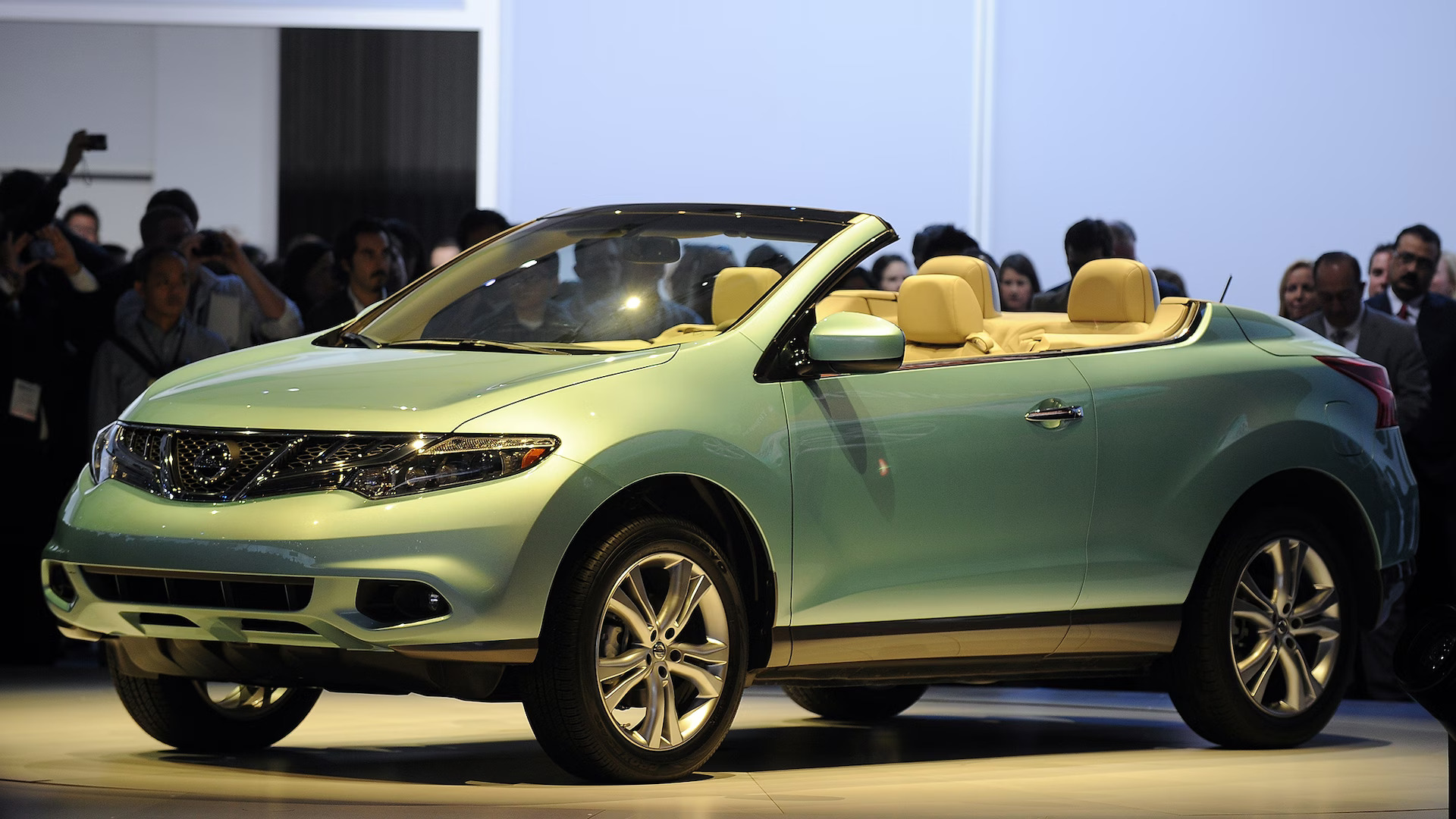
Ground clearance, while higher than a typical sedan, remains insufficient for meaningful trail use, and the vehicle lacks the underbody protection necessary to prevent damage to vital components when bottoming out, an inevitable occurrence on anything beyond smooth dirt roads.
The CrossCabriolet’s continuous variable transmission (CVT) represents another liability in off-road scenarios, lacking both the durability and the precise control needed for technical terrain.
Its all-wheel drive system, while adequate for light snow or rain, lacks the low-range gearing, locking differentials, or sophisticated traction control needed for genuine off-road challenges.
The vehicle’s standard street-oriented tires complete its unsuitability for adventure use, providing minimal traction in mud, sand, or loose surfaces.
Perhaps most tellingly, the CrossCabriolet lacks the practical considerations that genuine off-road vehicles incorporate: recovery points are absent or insufficient, cooling systems aren’t designed for the sustained low-speed operation often required off-road, and the convertible top creates vulnerability to the elements that adventurers specifically seek to avoid.
As a beach cruiser or fair-weather mall crawler, the CrossCabriolet might have its place but as an off-road vehicle, it represents form thoroughly divorced from function.
2. BMW X6
The BMW X6 epitomizes the prioritization of style over substance in the SUV market, creating an off-road-inspired silhouette that fundamentally compromises the utility and capability promised by its raised stance and aggressive styling.
Marketed as a “Sports Activity Coupe,” the X6 attempts to blend coupe aesthetics with SUV proportions, resulting in a vehicle that looks prepared for adventure while being engineered primarily for on-road performance. This contradiction becomes immediately apparent when the pavement ends.
The X6’s sloping roofline, its most distinctive design feature, creates a fundamental problem for off-road use. This prioritization of style significantly reduces ground clearance at the rear, creating a poor departure angle that will cause the back end to drag on even modest obstacles.
The vehicle’s long wheelbase and minimal breakover angle further ensure that the X6 will high-center on terrain that purpose-built off-roaders would go through without difficulty.
These aren’t minor limitations but fundamental geometric realities that no amount of electronic assistance can overcome.
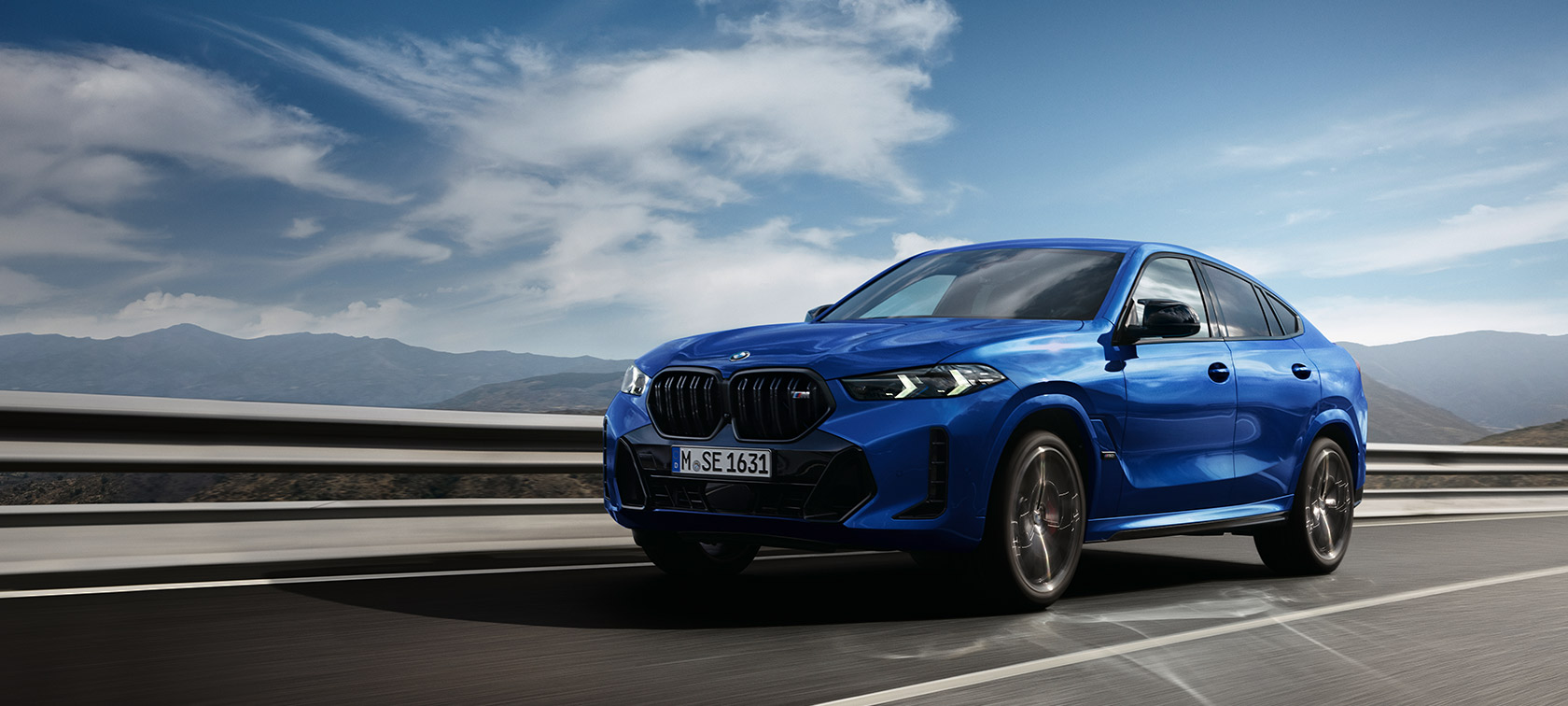
While the X6 does feature an all-wheel drive system, it’s designed primarily for enhancing on-road performance and providing foul-weather traction rather than true off-road capability.
The vehicle lacks the hardware essential for technical terrain: there’s no low-range gearing for controlled crawling, no locking differentials to overcome traction limitations, and insufficient underbody protection for the vital components that would be exposed to damage off-pavement.
The X6’s sophisticated electronics are optimized for on-road handling and struggle with the unpredictable surfaces encountered beyond maintained roads.
The X6’s standard run-flat tires compound its off-road limitations, featuring stiff sidewalls that lack the compliance needed for effective traction on varied surfaces and providing minimal protection against punctures from rocks or other obstacles.
The vehicle’s suspension, while delivering impressive on-road handling, lacks the articulation necessary to keep wheels in contact with uneven terrain a fundamental requirement for off-road traction.
These characteristics aren’t oversights but deliberate design choices for a vehicle never intended for serious off-pavement use.
Perhaps most tellingly, the X6’s interior design reveals its true purpose: its sloping roofline and performance-oriented cockpit prioritize style and on-road dynamics while sacrificing the practical space and versatility that genuine adventure vehicles require.
The X6 excels at its intended purpose, providing distinctive styling and on-road performance but represents a clear example of how marketing an urban performance vehicle with rugged styling cues doesn’t translate to actual off-road capability.
3. Mercedes-Benz GLE Coupe
The Mercedes-Benz GLE Coupe represents a prime example of conflicting design objectives resulting in a vehicle that projects off-road capability while being fundamentally unsuited for genuine adventure use.
Created as a style-focused alternative to the conventional GLE SUV, the Coupe variant sacrifices functional capability for aesthetic considerations at nearly every turn.
While its raised ride height and all-wheel drive might suggest off-road potential, closer examination reveals a vehicle optimized exclusively for paved roads and fashion statements.
The GLE Coupe’s defining characteristic, its dramatically sloped roofline, creates immediate functional compromises for off-road use.
This design choice significantly reduces rear visibility, creating dangerous blind spots when going through the technical terrain where precise wheel placement is critical.
The elongated rear overhang and compromised departure angle ensure that the vehicle will drag its rear fascia on obstacles that proper off-road vehicles would clear without contact. These aren’t minor limitations but fundamental geometric realities that cannot be overcome with technology.
While the GLE Coupe features Mercedes’ 4MATIC all-wheel drive system, it’s calibrated primarily for enhancing on-road stability and performance rather than off-road capability.
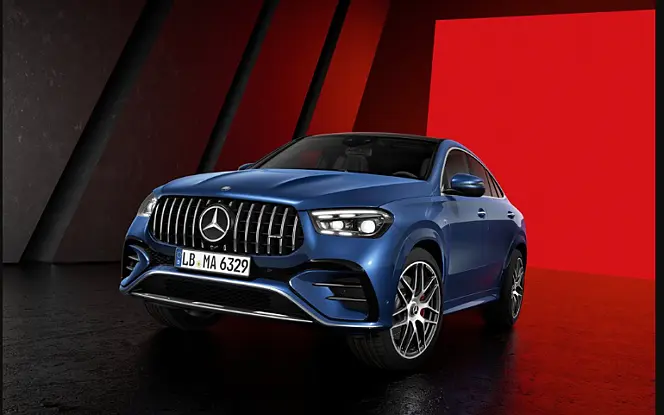
The vehicle lacks the specialized hardware found in genuine off-roaders: no low-range transfer case for controlled crawling, no locking differentials to overcome traction limitations, and insufficient ground clearance for meaningful obstacle navigation.
The sophisticated air suspension, while excellent for on-road comfort, lacks the travel and articulation necessary for maintaining consistent wheel contact on uneven terrain.
The GLE Coupe’s standard fitment of large-diameter wheels with low-profile tires further emphasizes its true purpose. These wheels look impressive in urban environments but provide minimal sidewall protection against impacts and reduced traction on loose surfaces.
The vehicle’s sophisticated electronics, adaptive damping, electronic stability control, and drive modes are optimized for on-road performance metrics rather than off-road capability. Even the optional “Off-Road Package” provides features that are primarily cosmetic rather than functional.
Perhaps most revealingly, the GLE Coupe’s interior packaging,g with its compromised cargo space and limited practicality compared to the standard GLE demonstrates that adventure utility was never a priority in its design.
The vehicle excels at projecting a rugged image while cruising boulevards but lacks the fundamental characteristics necessary for genuine off-pavement exploration. The GLE Coupe isn’t an off-road vehicle that compromises comfort; it’s a style-focused urban vehicle that compromises capability.
4. Chevrolet Trax
The Chevrolet Trax represents a common but problematic trend in modern automotive marketing packaging a fundamentally urban-focused vehicle with styling cues and positioning that suggest off-road capability it simply doesn’t possess.
As a subcompact crossover built on a modified economy car platform, the Trax exemplifies how raised ride height and available all-wheel drive are often misconstrued as indicators of off-road prowess. This disconnect between perception and reality can lead to dangerous situations when owners attempt to take these vehicles beyond their intended use case.
The Trax’s limitations begin with its fundamental architecture: a unibody structure derived from small car platforms, lacking the structural rigidity needed for the torsional forces encountered off-pavement.
Unlike purpose-built off-roaders with reinforced frames and protected components, the Trax’s vital mechanical elements—including cooling systems, transmission, and engine oil pan—sit exposed and vulnerable to damage from rocks, stumps, or other obstacles.
The minimal underbody protection provided is designed for stone chips on gravel roads, not the impacts encountered on genuine trails. While the Trax offers optional all-wheel drive, the system is fundamentally designed for inclement weather rather than off-road conditions.
It lacks the specialized hardware found in true off-road vehicles: no low-range gearing for technical terrain, no locking differentials to overcome traction limitations, and no sophisticated terrain management systems.
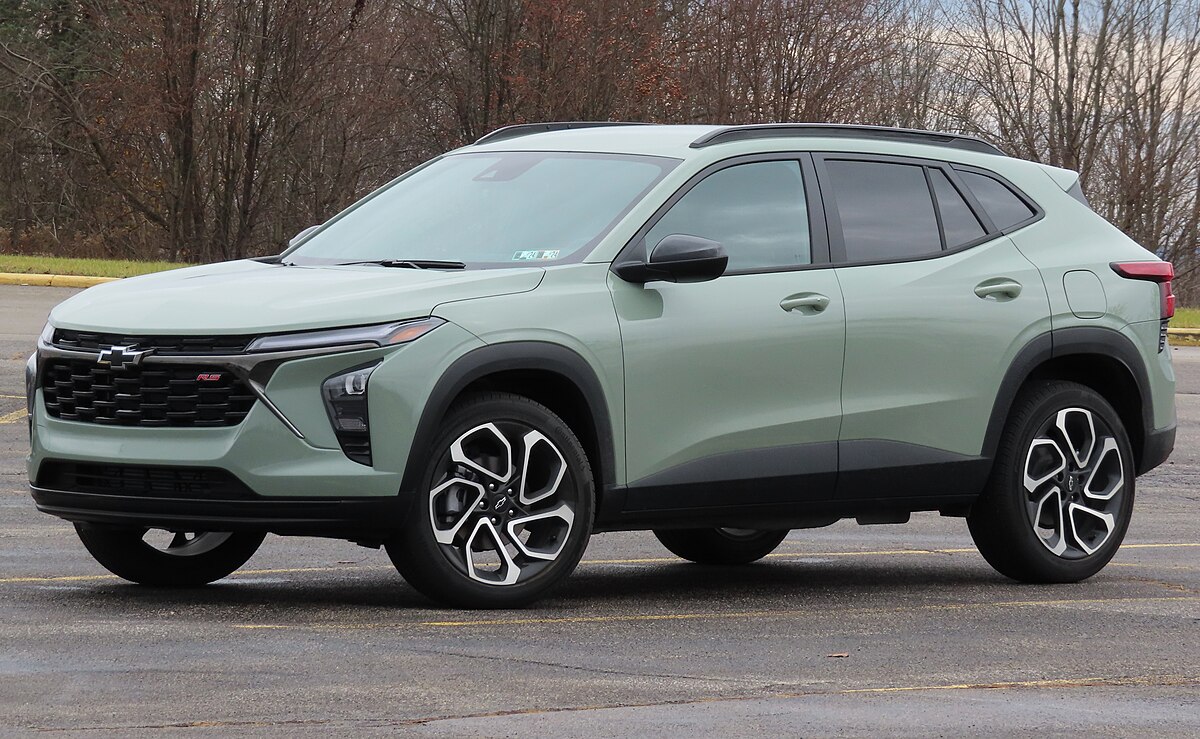
The vehicle’s modest ground clearance higher than a sedan but insufficient for meaningful obstacles, combined with limited suspension travel, ensures that the Trax will quickly reach its limits even on moderate trails.
The Trax’s power delivery system further highlights its urban focus. Its small-displacement turbocharged engine provides adequate on-road performance but lacks the low-end torque needed for controlled off-road driving.
The standard continuously variable transmission or conventional automatic (depending on model year) is calibrated for fuel efficiency rather than the precise control needed for technical terrain.
The vehicle’s electronic stability control systems, while excellent for on-road safety, often cannot be fully disabled for off-road scenarios where wheel slip is sometimes necessary.
The Trax’s inappropriate marketing as an adventure vehicle is perhaps most evident in its cooling system design, brake specifications, and recovery points all engineered for normal road use rather than the sustained strains of off-road driving.
It’s a capable urban runabout with some all-weather versatility, but marketing that suggests greater capability does a disservice to consumers who might mistakenly believe it belongs on genuinely challenging terrain.
5. Volkswagen Beetle Dune
The Volkswagen Beetle Dune represents a particularly egregious example of style-over-substance marketing in the automotive world.
Designed to evoke the spirit of Baja bugs modified classic Beetles with genuine off-road capability, the production Dune delivered little more than cosmetic treatments that suggested off-road capability without providing any meaningful improvement in actual performance beyond pavement.
This disconnect between appearance and functionality makes it a prime example of vehicles that should avoid venturing off maintained roads.
The Beetle Dune’s limitations start with its fundamental architecture: a front-wheel-drive platform with no option for all-wheel drive, perhaps the most basic requirement for any vehicle with genuine off-pavement pretensions.
This drivetrain configuration ensures that the Dune will struggle with traction in even modestly challenging conditions like loose sand, mud, or steep inclines.
The vehicle’s electronic traction control, while useful for on-road stability, lacks the sophistication needed to overcome the fundamental limitations of power being delivered only to the front wheels.
Despite marketing that highlighted the Dune’s increased ride height, the actual gain was minimal, less than half an inch compared to standard Beetles, providing negligible improvement in ground clearance or obstacle avoidance capability.
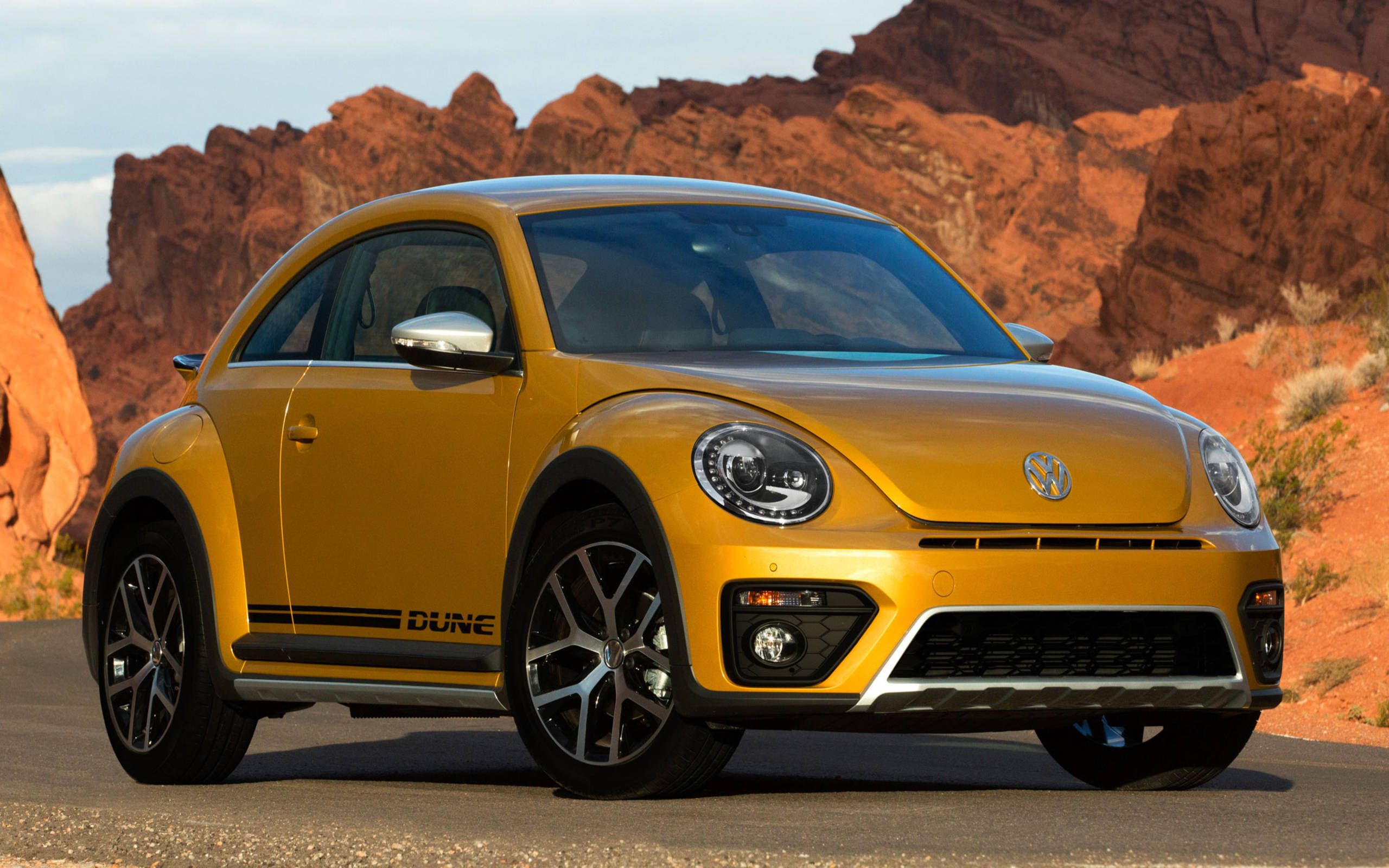
This token increase, combined with the vehicle’s long front overhang and vulnerable low-hanging components, ensures that even modest off-road obstacles will cause damage.
The Dune lacks the underbody protection, reinforced suspension components, and recovery points that genuine off-road vehicles incorporate as standard features.
The Beetle Dune’s styling elements, wider wheel arches, unique bumpers, and graphics create an adventurous aesthetic that its mechanical specifications simply cannot deliver.
The vehicle’s standard street-oriented tires, conventional suspension with limited travel, and low-profile design ensure that it will quickly reach its capabilities on anything beyond smooth dirt roads.
Unlike vehicles engineered for genuine dual-purpose use, the Dune’s compromises all favor on-road comfort and styling rather than functional capability.
Perhaps most tellingly, Volkswagen’s marketing materials carefully avoided making specific performance claims about off-road capability, focusing instead on the vehicle’s distinctive styling and heritage inspiration.
The Beetle Dune exemplifies how automotive marketing sometimes leverages adventure lifestyle imagery without delivering the corresponding capability, resulting in a vehicle that looks prepared for off-road adventures while being fundamentally unsuited for them.
It’s a beach cruiser in the most literal sense: fine for driving on pavement to the beach, but not designed for venturing onto the sand.
Also Read: 5 Base Models That Are Surprisingly Durable and 5 That Are Barely Usable

